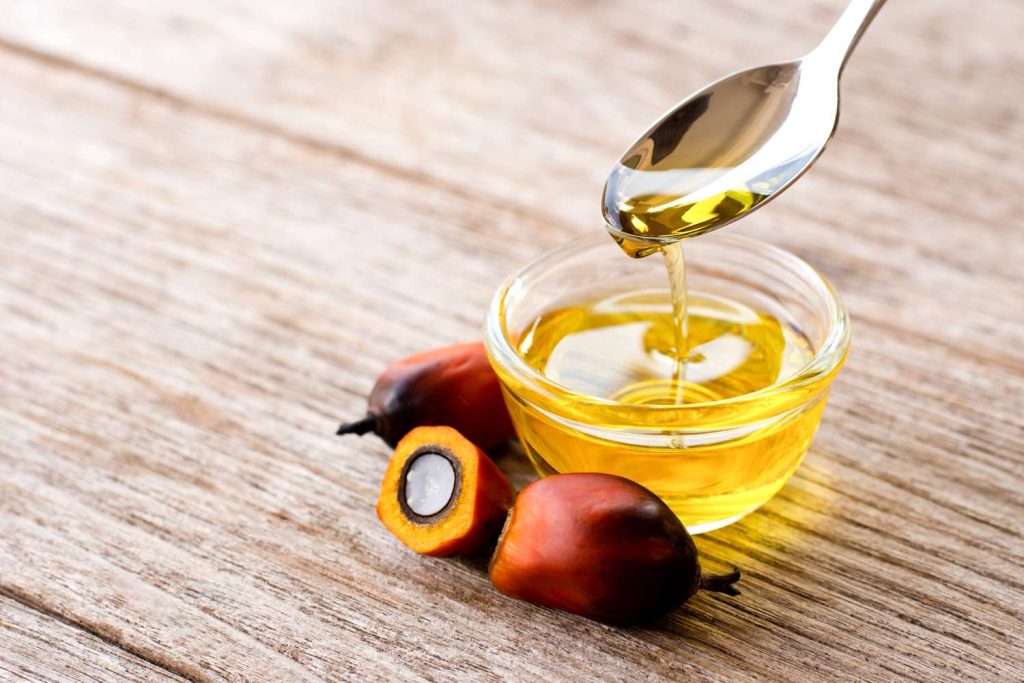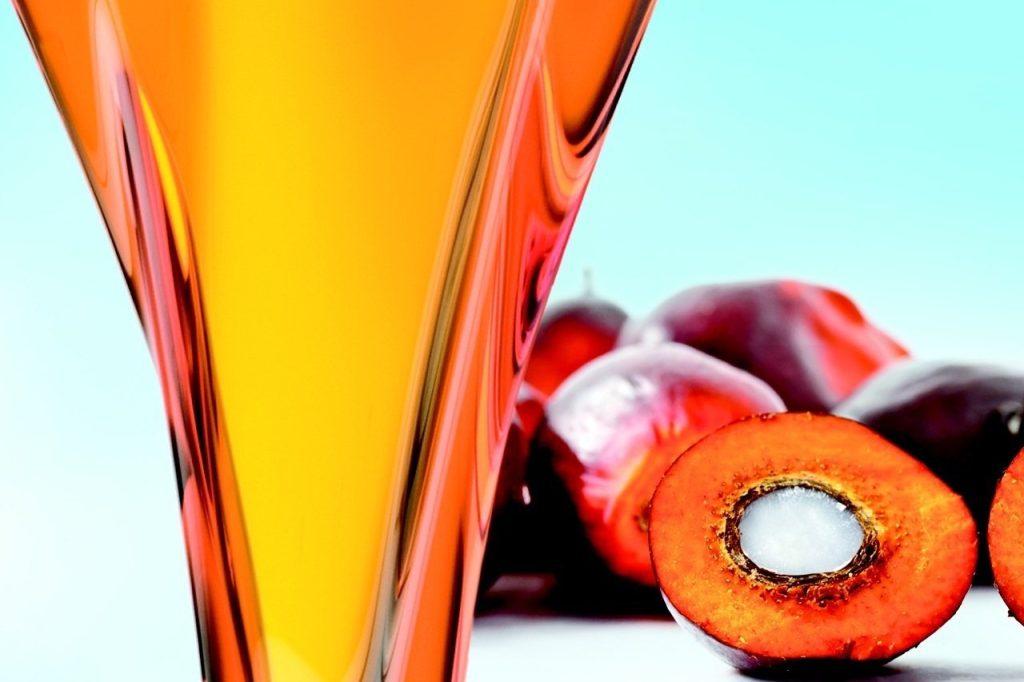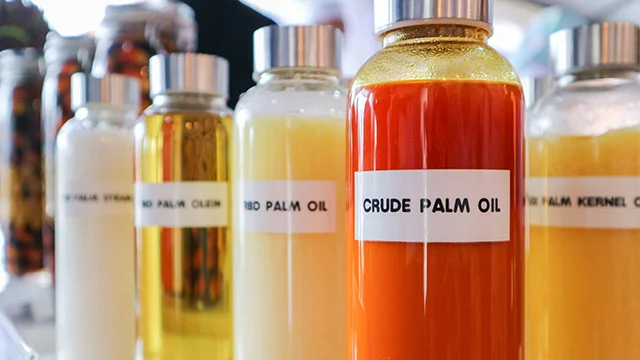Palm oil, which is produced by the oil palm tree, is widely utilized in both food and non-food products. It’s important to distinguish between refined palm oil and crude palm oil (CPO), as they differ in processing, uses, and characteristics.
This article explores the differences between palm oil and crude palm oil, covering production, uses, nutrition, environmental impact, and global economic roles.

What is Palm Oil?
The mesocarp, or flesh, of the oil palm tree’s fruit, is used to produce palm oil. It is a highly versatile oil used in the food industry, cosmetics, biodiesel, and many other industrial applications. The oil palm tree, native to West Africa, is now cultivated extensively in tropical regions, particularly in Indonesia and Malaysia, which are the largest producers of palm oil.
Palm oil is a productive and economical oil crop because of its high production per hectare. Its use in food products such as margarine, snack foods, and cooking oil is widespread, as well as in non-food items like soaps, detergents, and cosmetics.

What is Crude Palm Oil (CPO)?
Crude palm oil, often abbreviated as CPO, is the raw form of palm oil that is obtained through the initial extraction process from oil palm fruit. This process involves pressing the fresh fruit bunches (FFB) to release the oil. The CPO that comes out of this process is unrefined and contains impurities such as water, dirt, and free fatty acids.
The crude palm oil must undergo further processing to become refined palm oil, which is suitable for consumption and use in various products. Beta-carotene, one of the many carotenoids that give CPO its reddish-orange hue, is abundant in it. The oil also contains a significant amount of saturated fats, which is one of the reasons it has been a subject of debate regarding its health impact.
The Production Process: From Crude to Refined Palm Oil
Planting oil palm trees is the first stage in the production of palm oil. The fruit is harvested and transported to mills, where it undergoes an extraction process to separate the oil from the pulp. This raw product is crude palm oil.
Once the CPO has been extracted, it is sent for refining, which typically involves several steps:
- Degumming: The crude oil is treated to remove impurities like phospholipids and proteins.
- Neutralization: Free fatty acids are removed by neutralizing the oil with alkali.
- Bleaching: The oil is subjected to bleaching to remove color pigments and residual impurities.
- Deodorizing: The oil undergoes a final process where it is deodorized, eliminating any remaining odor or taste.
After these steps, the oil becomes refined palm oil, which is suitable for food products and other uses. The refining process helps reduce the oil’s level of free fatty acids, giving it a more neutral flavor and clearer appearance.
Key Differences Between Palm Oil and Crude Palm Oil
Processing
The most significant difference between palm oil and crude palm oil is the level of processing. Crude palm oil is a raw, unrefined product that is obtained directly from the oil palm fruit. It contains impurities, including residual water, dirt, and free fatty acids. On the other hand, palm oil typically refers to the refined form of the oil, which has gone through several steps of purification to remove these impurities.
Color and Appearance
Crude palm oil is known for its distinctive reddish-orange color, which is primarily due to the presence of carotenoids, including beta-carotene. The refining process removes much of this color, resulting in the pale yellow appearance of refined palm oil. The color difference is one of the most noticeable distinctions between the two oils.
Nutritional Profile
Both crude and refined palm oil contain similar amounts of fats, including a high percentage of saturated fats, though the composition can slightly differ due to the refining process. Crude palm oil retains more of its natural vitamins and antioxidants, such as vitamin E (tocotrienols and tocopherols), which are removed during refining. As a result, crude palm oil offers more natural nutrients than its refined counterpart. However, both types are high in calories and should be consumed in moderation.
Applications
Both palm oil and crude palm oil are used in various industries, but their applications differ slightly due to their processing and purity levels.
- Crude Palm Oil: CPO is typically used in its raw form in industrial applications, such as in the production of biodiesel, animal feed, and certain food products where the refinement process is not essential. Additionally, it can be further processed to create additional goods, such as palm kernel oil, which is made from the oil palm fruit’s seeds.
- Palm Oil: Refined palm oil is widely used in food products like margarine, cooking oils, baked goods, snack foods, and confectionery. It is also frequently found in non-food products such as detergents, shampoos, soaps, and cosmetics. The refined oil’s neutral flavor and lack of odor make it a preferred choice in these applications.
Health and Nutritional Considerations
There is ongoing debate about the health implications of consuming palm oil, particularly because of its high saturated fat content. Palm oil is composed of approximately 50% saturated fat, with a mix of palmitic acid (the primary saturated fat) and oleic acid (a monounsaturated fat). This balance is similar to that of animal fats, which has raised concerns about its impact on cholesterol and heart health.
But when it comes to vitamins and antioxidants, crude palm oil is superior to refined palm oil. It preserves higher quantities of vitamin E, which is known for its antioxidant capabilities, helping protect cells from damage. Refined palm oil loses much of this nutritional benefit during the refining process.
Environmental and Sustainability Issues
Both palm oil and crude palm oil face significant environmental concerns, primarily related to deforestation, habitat destruction, and the impact of large-scale palm oil plantations on biodiversity. The oil palm industry has been criticized for contributing to the destruction of rainforests in Southeast Asia, particularly in Indonesia and Malaysia, where vast tracts of land are cleared for new plantations.
Crude palm oil, in its raw form, tends to have a higher environmental footprint due to its lower yield during processing compared to refined palm oil. Refined palm oil is more energy-efficient to produce because it has been processed to remove impurities, making it more economically viable and reducing waste.
As a result, the palm oil industry has made efforts to adopt more sustainable practices, such as the Roundtable on Sustainable Palm Oil (RSPO), which sets standards for sustainable production, aiming to reduce environmental damage and improve labor conditions.
Conclusion
Despite coming from the same source, palm oil and crude palm oil are not the same in terms of processing, appearance, nutrition, and applications. While refined palm oil goes through additional processing to get rid of contaminants, crude palm oil is unrefined and unprocessed. Crude palm oil is mostly employed in industrial settings, however, palm oil is widely used in food and cosmetics. Although there are environmental and nutritional issues with both oils, the industry is shifting to more sustainable methods. Both customers and those engaged in manufacturing, refinement, and regulation should be aware of these distinctions.


